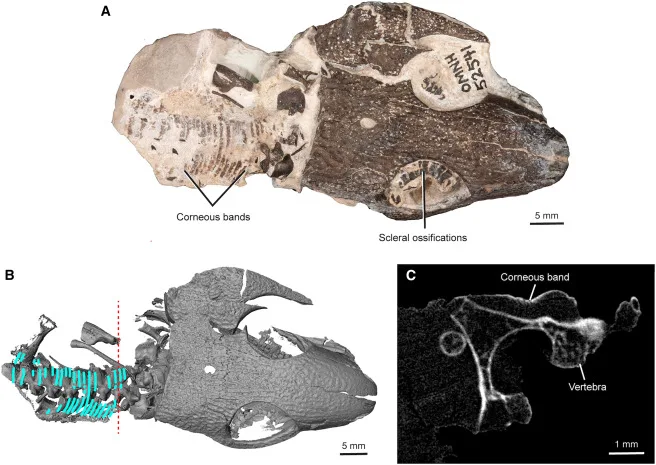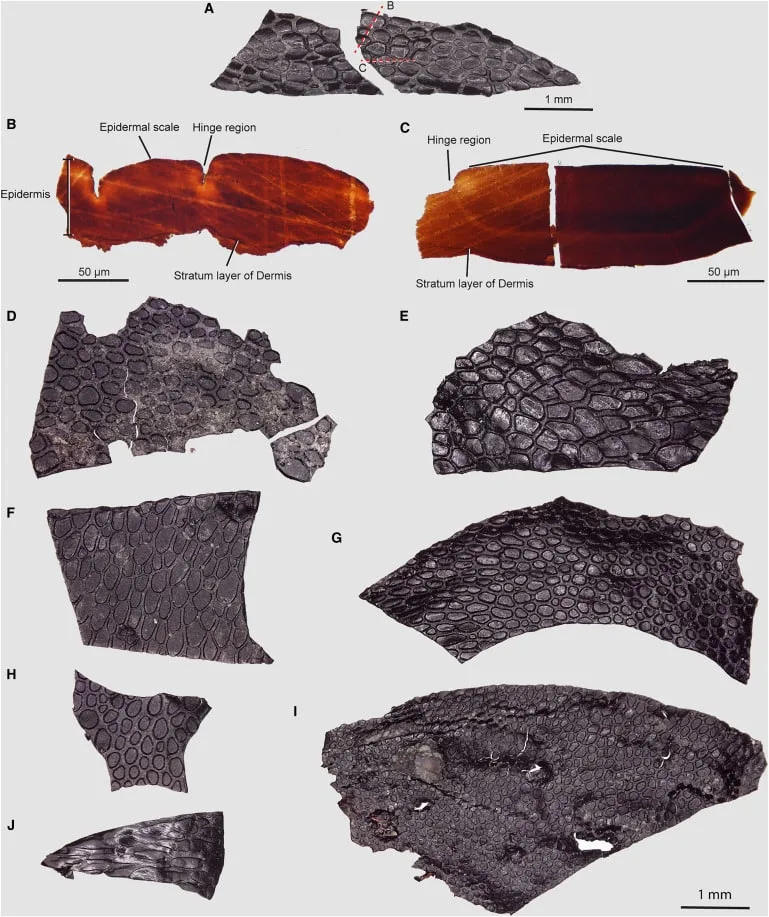World’s oldest fossilized skin found
- January 12, 2024
- 0
An international group of paleontologists discovered a fossilized sample of reptile skin that is 286-289 million years old. This is 18-21 million years older than the oldest previously
An international group of paleontologists discovered a fossilized sample of reptile skin that is 286-289 million years old. This is 18-21 million years older than the oldest previously

An international group of paleontologists discovered a fossilized sample of reptile skin that is 286-289 million years old. This is 18-21 million years older than the oldest previously found epidermal fragments.
Skin, like other soft tissues, is the first to fade after the animal’s death and does not have time to fossilize. If only such organs did not fall into an oxygen-free environment. What happened to the skin fragments of the first reptiles from the Paleozoic period, dating back to 286-289 million years old? The animals died in one of the Richards Spur limestone caves in the American state of Oklahoma. Clay, oil and various resins leaked from the cracks, which got into the reptiles’ skin and served as a protector.
The pieces of skin turned out to be very small; overall it was smaller than a fingernail, but this is a rare feat for such finds. Scientists from Jilin (China), Oklahoma (USA) and Toronto (Canada) universities, who examined the fossils, said that the samples are the oldest known examples. They are 18-21 million years older than previously discovered such tissues.

The fossils were found by amateur paleontologists Bill and Julie May, who have been studying Richards Spur Caverns for a long time. Later, the finds fell into the hands of scientists. After examining them, experts realized that this part was the epidermis, the upper layers of the skin, and that it itself resembled a crocodile with its characteristic “spotted” pattern. Epidermal layers are a distinctive feature of the skin of amniotes, a group of terrestrial vertebrates found in reptiles, birds, and mammals. Such tissues appeared in amphibian ancestors during the Carboniferous period.
The general shape of one of the skin rashes turned out to be convex with several protruding areas, with scale depth ranging from 25 to 35 micrometers. In total, scientists counted 85 irregularly shaped bumps in the two areas with a frequency of approximately 13-16 square millimeters. Below the level of the tubercle, the researchers examined thin, wrinkle-like protrusions that were parallel to each other.
It is not possible to determine exactly which species the valuable leather pieces belong to. However, other samples were also found there – skin scales (part of the deeper epidermal tissues) and the remains of the skeleton of an animal, on whose vertebrae several small strips were preserved, again similar to the remains of the epidermis. becomes keratinized.
Scientists determined that the bones belonged to the Captorhinidae family, primitive reptiles known from the Upper Paleozoic. These animals belonged to the so-called anapsids and did not yet have temporal windows. However, it is not clear which species the scattered fossils belong to; one or more, because they were all found independently of each other.
“Discovering such ancient skin samples is a unique opportunity to peer into the past and learn what the epidermis of some early reptiles looked like. “It’s not at all what we expected to see,” said the study’s first author, Ethan D. Mooney of the University of Toronto. The scientists’ conclusions are current. Presented in the journal Biology.
Source: Port Altele
As an experienced journalist and author, Mary has been reporting on the latest news and trends for over 5 years. With a passion for uncovering the stories behind the headlines, Mary has earned a reputation as a trusted voice in the world of journalism. Her writing style is insightful, engaging and thought-provoking, as she takes a deep dive into the most pressing issues of our time.